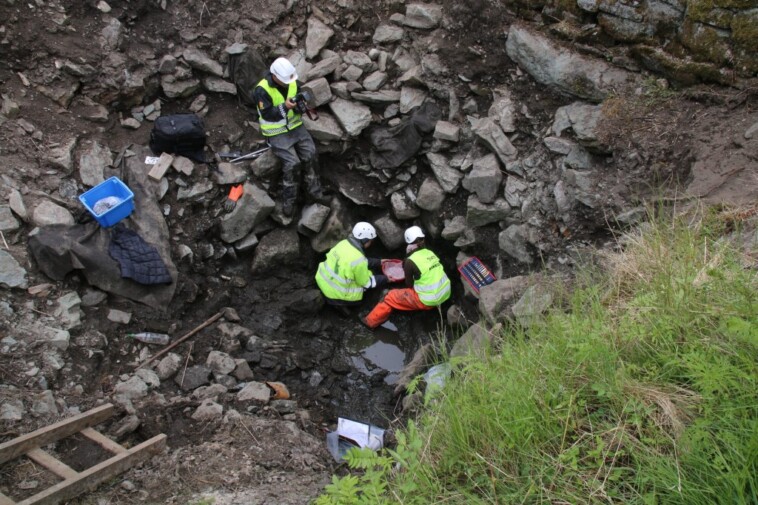Researchers have unearthed new findings about a mysterious, centuries-old corpse that was dumped in a Norwegian castle’s well.
Most of what is known about Norway’s early history comes from the Sverris Saga, writings which follow King Sverre Sigurdsson’s reign through civil wars of the 12th and 13th centuries.
Believed to have been penned by a close associate of the king, it covers battles in-depth — including one in 1197 when Bagler fighters with Sverre’s enemy, the Roman Catholic Church, attacked a castle he was staying at in central Norway.
The saga says the Baglers, who came from the south, “took a dead man and cast him into the well, and then filled it up with stones,” potentially to contaminate the king’s water source.
It was assumed he was one of the king’s men but little else was known about the identity of “Well-man” until a partial excavation of the Sverresborg Castle well — in the modern-day city of Trondheim — turned up the remains in 1938.
Further excavations in 2014 and 2016 led by Anna Petersen, an archaeologist at the Norwegian Institute of Cultural Heritage Research, turned up additional remains, including his left hand and skull.
But scientists recently discovered that the man was from southern Norway, disproving the belief that he was one of King Sevrre’s men, according to the study, which was published in the journal iScience on Friday.
“Perhaps the Baglers threw one of their own dead into the well,” researchers wrote.
A lead author of the paper, Martin Ellegaard, also from the Norwegian University of Science and Technology, used samples of a tooth to sequence the genome, according to the article, which revealed Well-man’s gender and indicated that he likely had a medium skin tone, blue eyes and blond or light-brown hair.
The findings also suggested that the man had a bad back and likely performed heavy manual labor.
“He has been no one,” Petersen told the outlet. “But now he has become someone. He has had a life.”
The studies confirm the ancient texts and give insight into how people were traveling across the country in medieval times.
“Just finding the remains shows [these stories are] not made up,” Martin told NPR of the ancient texts. “They might be elaborated and exaggerated, but they’re based on fact.”
The researchers say this is the oldest genome to be sequenced of a specific person from an Old Norse saga, and that it provides insight into the longstanding isolation and genetic differentiation of southern Norwegians since even before that time.







